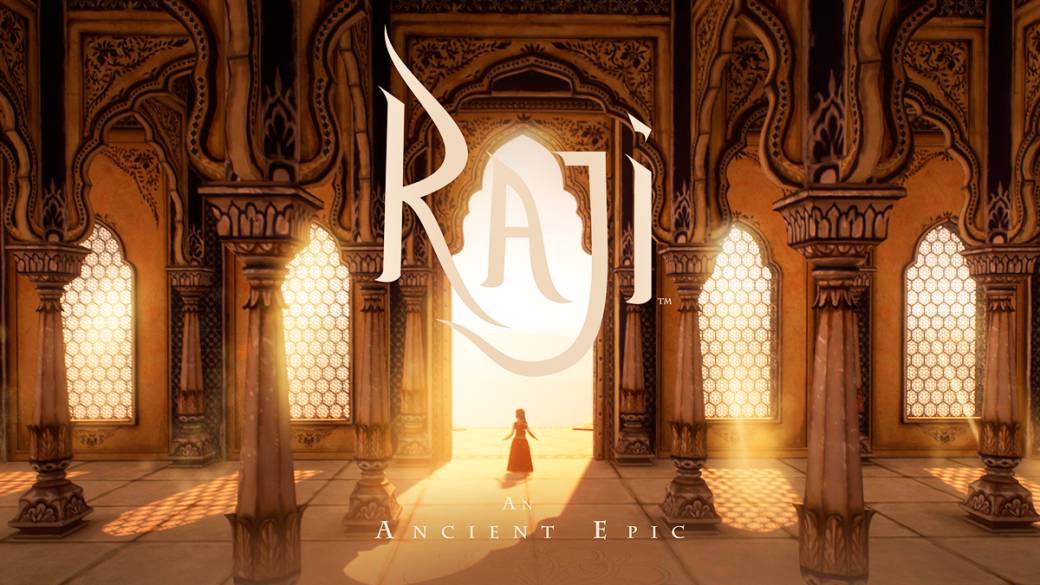
The debut feature from the Indian studio Nodding Heads Games is a reliable action platformer based on the mythology of their country.
One of the legends of Hindu mythology included in Raji: An Ancient Epic tells that the sage Kashiapa, creator of humanity, once offered to grant wishes to his wives Kadru and Vinata to show them his affection. Kadru asked to be the mother of a thousand children; for Vinata, on the other hand, one was enough as long as it was more powerful than all of her sister’s. Kashiapa agreed, and Kadru gave birth to a thousand eggs, which eventually hatched into serpentine creatures known as the Naga. Meanwhile, Vinata had given birth to two eggs, but their hatching was being delayed and she became jealous when she saw Kadru’s progeny. So he decided to open one ahead of time.
Aruna emerged from him, a creature with half-formed bird features because her mother had prematurely interrupted the pregnancy. The story continues with a curse, Vinata’s enslavement and the subsequent arrival of Garuda, a fully formed younger brother who would end up rivaling the Naga lineage. But the most important part for us today is Aruna’s, because even though An Ancient Epic manages to dazzle in some moments – as Aruna did in other legends despite that handicap – in others it leaves evidence of insufficient incubation. Something that ranges from unpolished technical details or untapped playable mechanics to anti-climatic resolutions of an adventure that is shortened more than necessary and fails to be the “epic” that its title proclaims.
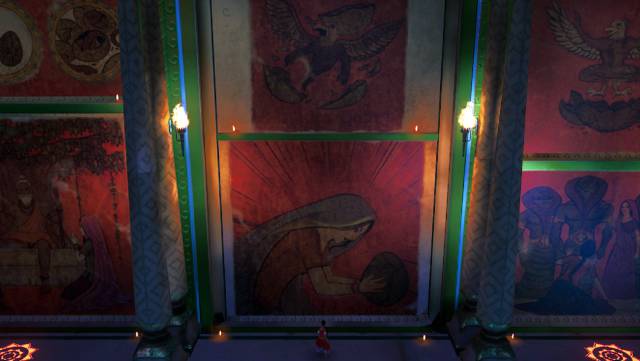
The positive part is that, even with those, it does manage to do enough things well to join the not too long list of recommended indies if we are looking for an action platform reminiscent of Prince of Persia. Preceded by an unsuccessful Kickstarter campaign and the reluctance of various publishers to take over due to Nodding Heads Games’ status as a first-time studio and the Indian industry’s greater orientation to the mobile market than the console market, the game was on the verge of cancellation. and was saved in extremis by one of the grants offered by Epic Games to projects developed with the Unreal Engine. Ironically, despite this, it has landed first on Switch, although it is a temporary exclusive before its arrival on PC, PS4 and One on October 15.
Big trouble in little India
In addition to the game, Raji is the name to which its protagonist responds, a young Indian woman who, together with her little brother Golu, attends carnivals to perform acrobatic displays. The youngest’s specialty, on the other hand, is the representation of theatrical works with shadow puppets, a style that the studio also uses for most of the narrative exposition sequences. This, in addition to saving resources, makes it possible to further reinforce that ancestral identity that the game is about, although sometimes it works as a too abrupt shortcut between playable segments: after Golu’s abduction, Raji sets out on a journey through various regions and sees himself involved – directly or indirectly – with gods, demons and other beings of Hindu culture, but some events of great importance are dispatched unceremoniously, reducing their impact and the general scale of the story.
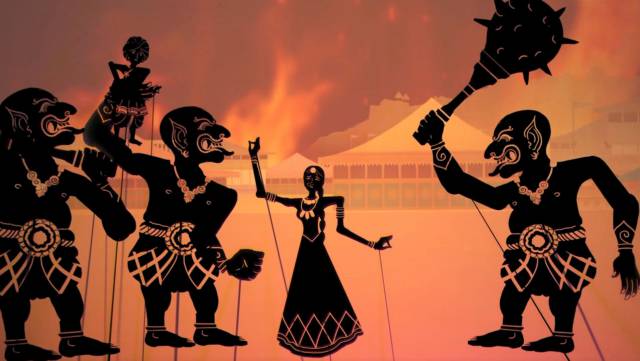
Of course, not everything is reduced to the puppets, and in the game world we also find a multitude of murals that serve Vishnu and Durga, the gods who watch over Raji, to narrate legends like the one we discussed at the beginning of the Reviews. They are not always relevant to the present story, sometimes they simply exist to better outline the universe, but their addition is welcome for being a mythology barely explored in video games and also being implemented in a non-intrusive way – they are optional and we are still in Raji’s control. , so we can move forward while they talk. Beyond these stories, Vishnu and Durga also comment on the progress of our protagonist in real time without her listening, to offer the player extra context and create anticipation for the dangers to come.
Seeing the deliberate camera movements – not controlled by the player -, the elaborate setting and the solitary nature of Raji’s journey, it would not be difficult to imagine a more intimate and evocative version, online, of games like Journey or Inside, where the scenarios and the animations carry the narrative load. Opting for a less subtle approach is helpful when it comes to exposing your culture, although it also has the counterpart of leaving little to the imagination and being choppy by a dubbing that doesn’t always border on the best level: although the credits reveal that Raji and Durga share actress, the interpretation of the first in particular is somewhat flat given her greater emotional involvement. That said, and despite its simplicity, the narrative facet tends to be solid, at least until the hasty final act.

Middle caste warrior
Because while it is a figure that will vary from player to player, even the most generous estimate leaves it below five hours. Something that in itself does not have to be bad – the games mentioned in the previous paragraph also drop a lot from that figure – but in the case of An Ancient Epic it takes its toll both for the absence of a catharsis proportional to the rest of the trip and by somewhat limiting the growth and versatility of his combat. Although in that sense, the game deserves credit for gradually introducing three weapons that, far from taking over from the previous ones, complement each other in their functions and remain in force until the end of the game.
The Trishul is the initial trident, oriented to melee fights (although it can be thrown like a javelin) and reactive both to two buttons that execute different combos and to the jump attack and contextual uses when activated next to scalable walls or columns. This same base is then adapted to the Sharanga, a bow that naturally enhances the ranged attack and is accompanied by a versatile barrage of arrows that requires good timing to calculate the delay of their fall and hit enemies in motion. And finally, Nadaka and Srivatsa are a combination of sword and shield that allow you to adopt a defensive posture to neutralize damage, although it cannot be abused or it ends up breaking. All are automatically assigned to the control cross so as not to have to pause the game, encouraging an almost essential rotation to solve some situations.
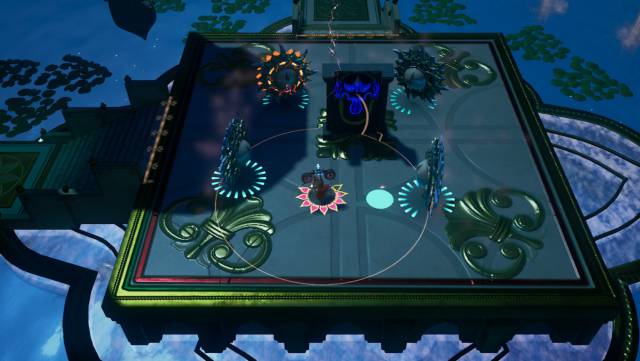
There is also a fourth weapon, although its appearance is so late that it has little strategic impact and highlights the absence of a second round where the game can combine greater difficulty and / or different configuration of enemies with the complete arsenal at the beginning. Something similar happens with the menu of favors of the gods, where we can change the predominant element and invest orbs that we collect through the scenarios to improve skills that are activated manually or based on probabilities depending on the case. These investments can be reversed, so it is possible to change both the element and the enhanced skills at any time, although the brevity of the development and that lack of post-credit continuity leave it as a rather trivial aspect in the not so long term.
Difficulty also usually does not scale to extremes where optimizing skill use is essential. The game does not distinguish between modes and tries to balance the experience in such a way that indiscriminately mashing buttons is inadvisable – again, changing weapons is an important factor, as well as dodging – although the distance from the camera and the Improved work on animations that anticipate attacks sometimes complicates things. When we are surrounded, the screen can lose a lot of legibility, something to which the fluctuating resolution is added, especially in portable mode. Not enough to break his balance, in large part thanks to the safety net put in place by the mechanic that allows him to recover life by executing enemies on the brink of death (very much in the style of the last DOOM), but capable of creating some frustrations . For their part, the bosses, although reduced in number – we would have liked to see one or two more – tend to be the hot spots thanks to their size and better anticipation of their attacks.

Platforms, puzzles and life beyond Switch
The problem as well as the solution lies in the fact that, unlike other titles more focused on combat (such as the recent Hades), Raji does not specialize in hack and slash and opts for a multi-genre approach that takes us back to that platform so Prince of Persia. Actions such as running up walls or climbing columns are frequent and easy to execute, and although sometimes the preset camera can make us err, the control points are generous and counteract it. Of course, the assignment of the jump and the dodges to the same button gives rise to inconsistencies, especially when combined with combat, since the game decides in a contextual way which action to apply and it may not be the one the player wants. In that sense, and given the similarities that it also shares with the early God of War, an alternative would have been to move the dodges to the right analog — without designated function.
But like almost everything in Raji, what we have in front of us manages to work, even without great fanfare. The same applies to puzzles, consisting of rotating hoops on the ground to form paintings that revive memories of Raji with his brother or vertical pieces that reconstitute sacred trees to offer visions of the future and open new areas. Simple, but effective to add variety to development. The third level (the Hiranya Nagari water city) reaches the highest levels in terms of design by proposing both two simultaneous objectives that break with the usual linearity and introducing new platform challenges through the use of lotus leaves to cross the water and even new puzzles based on the movement of gears. It is the section in which Raji shows his best face and shows the potential he would have if all the development were kept at that level.

Spinning with that, and taking advantage of the fact that this level is the most open of the group, we must also comment that not infrequently the framerate suffers – there and in the thick of the game. As a project born on PC and “de-scaled” for Switch, the cuts are noticeable even without other versions to the side to compare. Certain textures fall well below the medium level and we have also encountered the occasional glitch in the enemy AI or Raji’s collisions. So unless the increase in resolution and level of detail creates new problems, the upcoming versions of PC, PS4 and One should be preferred options for multiplatform users. Switch will always have portability in favor, and the game as such is enjoyable in that mode, but the above about the remoteness of the camera and the effects of the resolution on the readability of the combat are far from making it the ideal version to play it.
Even so, and not to end up in a negative tone, Raji is a solid proposal that may not take full advantage of the clubs it plays, but it works as a wide open window to the recreation of a universe that video games do not usually allow roam. Both in Switch and in the coming platforms there are better exponents dedicated to combat, platform, puzzles or narrative, but none offers exactly the same although there are clear similarities or inspirations nurturing the creativity of the studio. This one has a clear margin for improvement, be it updating the present installment or developing a sequel, but the time spent here is not wasted. Neither for them, nor for the players interested in the theme.
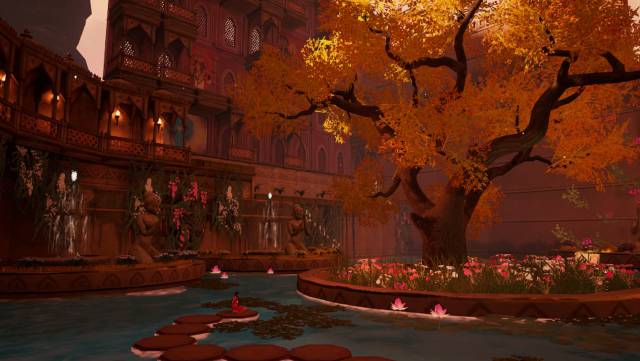
CONCLUSION
Saying that Raji: An Ancient Epic is a Prince of Persia set in ancient India is a good way to sell it, although the game finds its own glimpses of identity beyond that cultural twist. The introduction of a mythology so alien to many players is the gateway to a platform adventure with abundant action that does homework and, although it may not get the best grade, it leaves some interesting ideas such as the rotation between three types of weapon, distractions in the form of puzzles and an appropriate variation level after level. Unfortunately, some elements ask for a little more refinement or time to develop, the optimization in Switch has clear fringes and the story does not culminate with the force that the previous acts promise. It is an epic that is halfway to the greatness that the studio seems to want to convey, although it does not result in a highly recommended game.
THE BEST
- The use of Hindu mythology and architecture to build an interesting world.
- The combat system, while simple, offers enough intensity and versatility.
- Platforms and puzzles add variety to development.
WORST
- Much improved performance and occasional glitches.
- Abrupt ending. The last level comes and goes without leaving a proper trace.
Okay
It meets the expectations of what a good game is, has quality and does not present serious flaws, although it is missing elements that could have taken it to higher heights.
